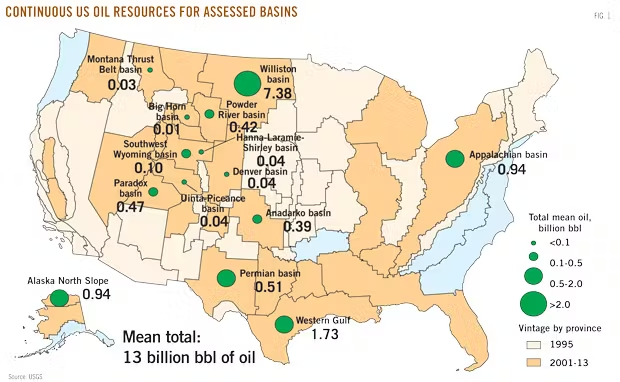Have you ever heard of the “Three Forks Play”? There’s a reservoir that lies in The Bakken shale, that according to researchers contains 250 million barrels of crude that has yet to be untapped. Apparently it’s also not too deep in the ground.
North Dakota has been known for its claim to oil fame, and one of the top shale producers in the country. The Bakken has been considered a mature play, but thanks to studies by researchers within the states Department Of Natural Resources, they have shared the idea of a second life for The Bakken. What does that mean for North Dakota? Another Boom Perhaps?
Three Forks Formation is an unconventional oil and gas reservoir within western North Dakota, approxamately 8,000 weeks through mid 2023. Most of the wells already drilled in the Three Forks Formation, and drilled in the upper strata of the formation. The middle layer, nearly 340 wells have been drilled and in the lower layer only 50 wells drilled so far.
Since the discovery of the Parshall Field in the Middle Bakken back in 2006, a lot of the drilling has been concentrated there. The upper part of Three Forks followed between 2008 and 2010. In the early 2010, drillers moved on to the middle Three Forks, and drilled 360 horizontal wells. Producing around 92 million barrels of oil and 238 billion cu ft of natural gas. All of this is only 2% of the overall drilling activity for The Bakken, and less than 2% of total output.
States researchers evaluated existing wells in the area, finding sufficient evidence of untapped oil in most of the wells they studied. Developing these reserves would require drilling 600 more wells in the Three Forks reservoir and outside the reservoir.
“There have been about 20 wells drilled in this middle Three Forks unit per year for the last six years, but it probably should be double to triple that,” one of the researchers involved in the study, Tim Nesheim, told Inforum.
Nesheim added that many drillers may have assumed that additional drilling in the area would only lead to faster production of oil and gas rather than higher production. That assumption, he said, was inaccurate. “After we (Nesheim and Starns) did our work, we believe that it’s more than that, that when you drill middle Three Forks wells, you’re getting more oil out of the ground long term,” the researcher said. “You’re not just speeding up your recovery, but you’re adding to your long-term recovery.”
“We’ve done some of the research, and our hope is that companies will take our work and build on it, kind of giving them enough of a head start to do more,” Nesheim also told the North Dakota publication.
The results of the study add to the growing body of evidence that U.S. shale can still surprise with undiscovered resources, even as more and more reports emerge suggesting that prime acreage in the shale patch is running out. Indeed, some resources are being exhausted, but the North Dakota news suggests that there is still plenty of crude to keep the U.S. producing at or around current levels for years
The first stage of the shale industry’s evolution is clearly over. That was the age of “Drill, baby, drill” when nothing mattered but trying to see just how much oil one could get out of the ground, expenses be damned. It was also the age of the massive debt piles, the cash-burning, and the increasingly grumpy shareholders.
Now, the industry has moved on to the age of fiscal discipline, with production growth a lot more moderate, not only because some reservoirs are maturing and beginning to get depleted but because of a change in priorities, from production at all costs to shareholder returns at all costs.
Even in this new environment, however, there have been surprises. Last year, supermajors reported record oil and natural gas output from the top shale basin, the Permian. They also spoke of their plans to raise that output even further. Meanwhile, independents were boosting their own guidance after seeing higher volumes and lower cycle times to bring wells online in the first half of 2024.
Most of those gains were the result of efficiency improvements, but these efficiency improvements cannot be sustained on a permanent basis. Sooner or later, drillers will run out of space for efficiency gains. The prospect of untapped resources getting discovered yet in the shale patch, on the other hand, means more oil and gas for longer.
Source: Oilprice

